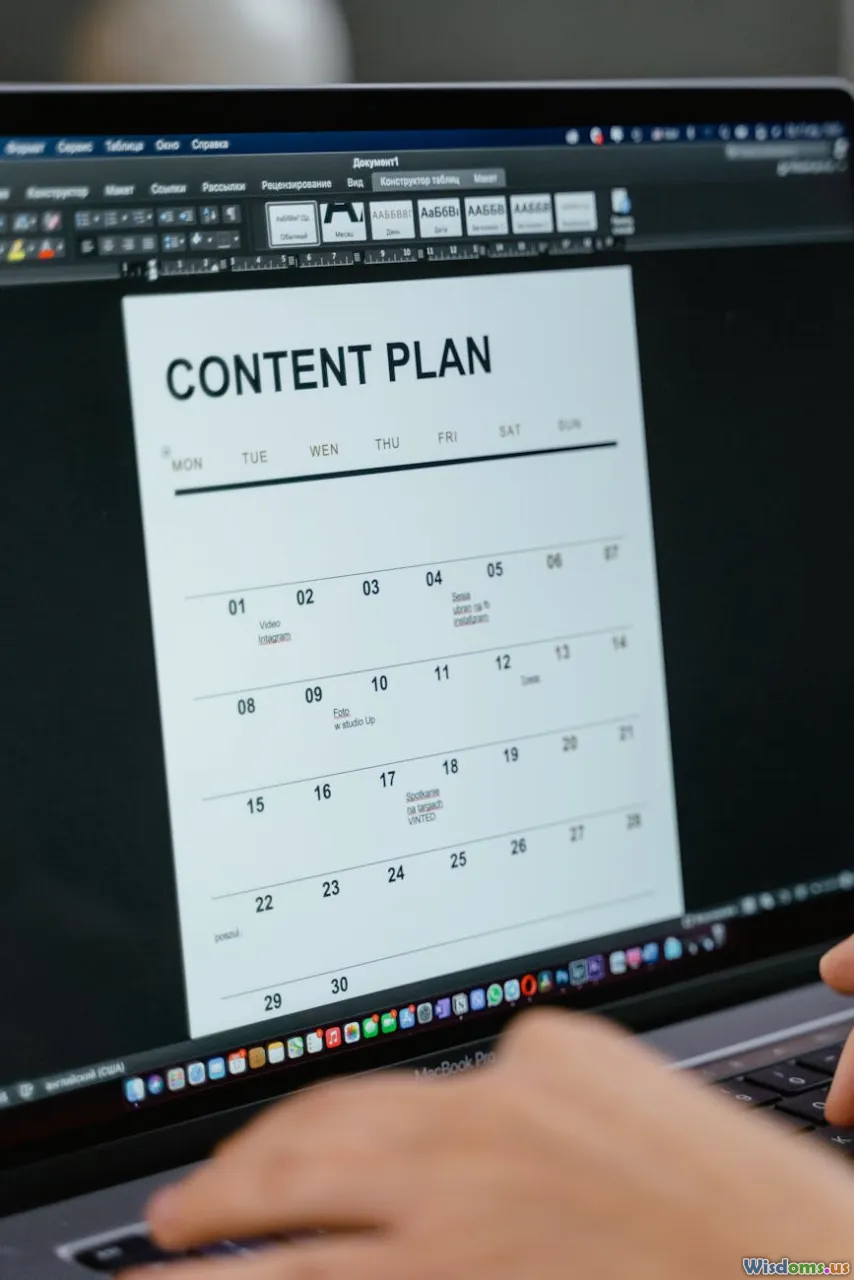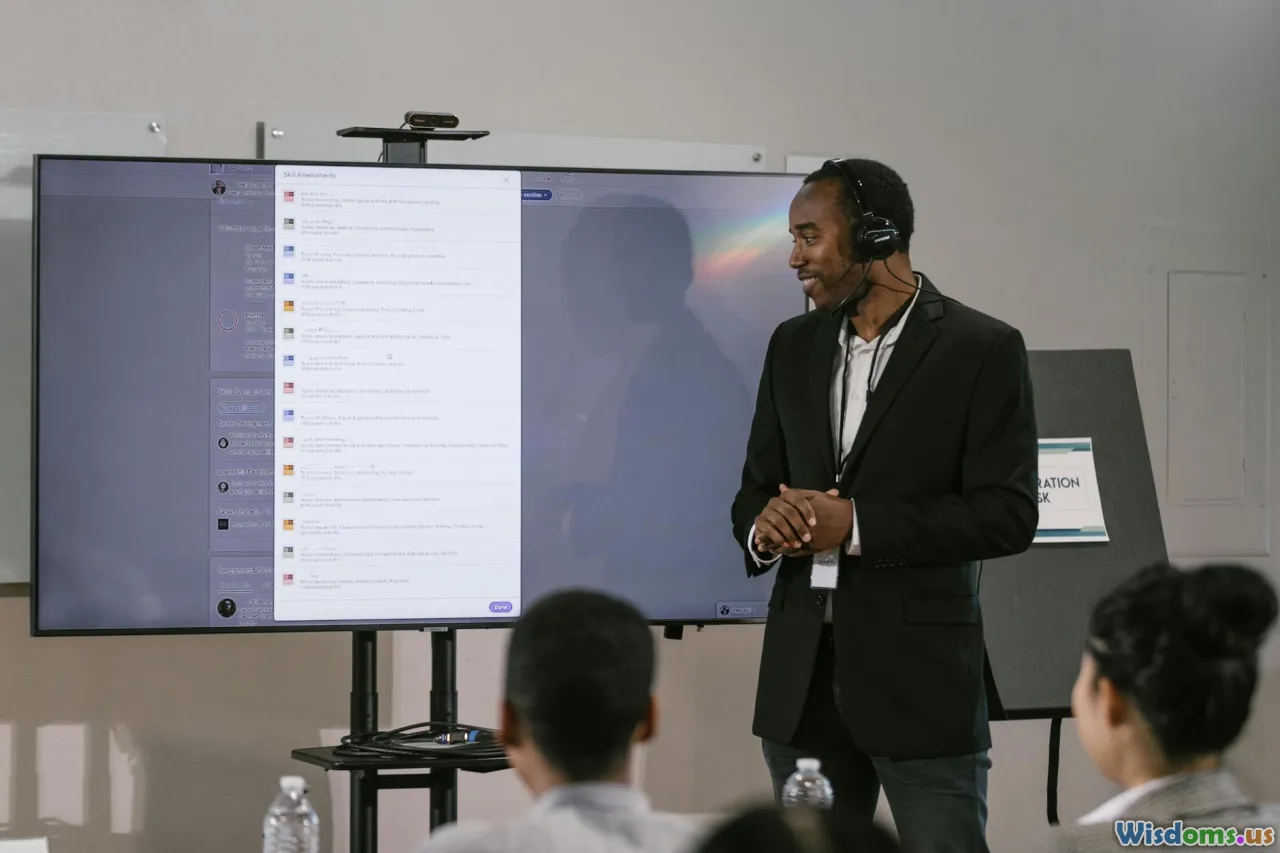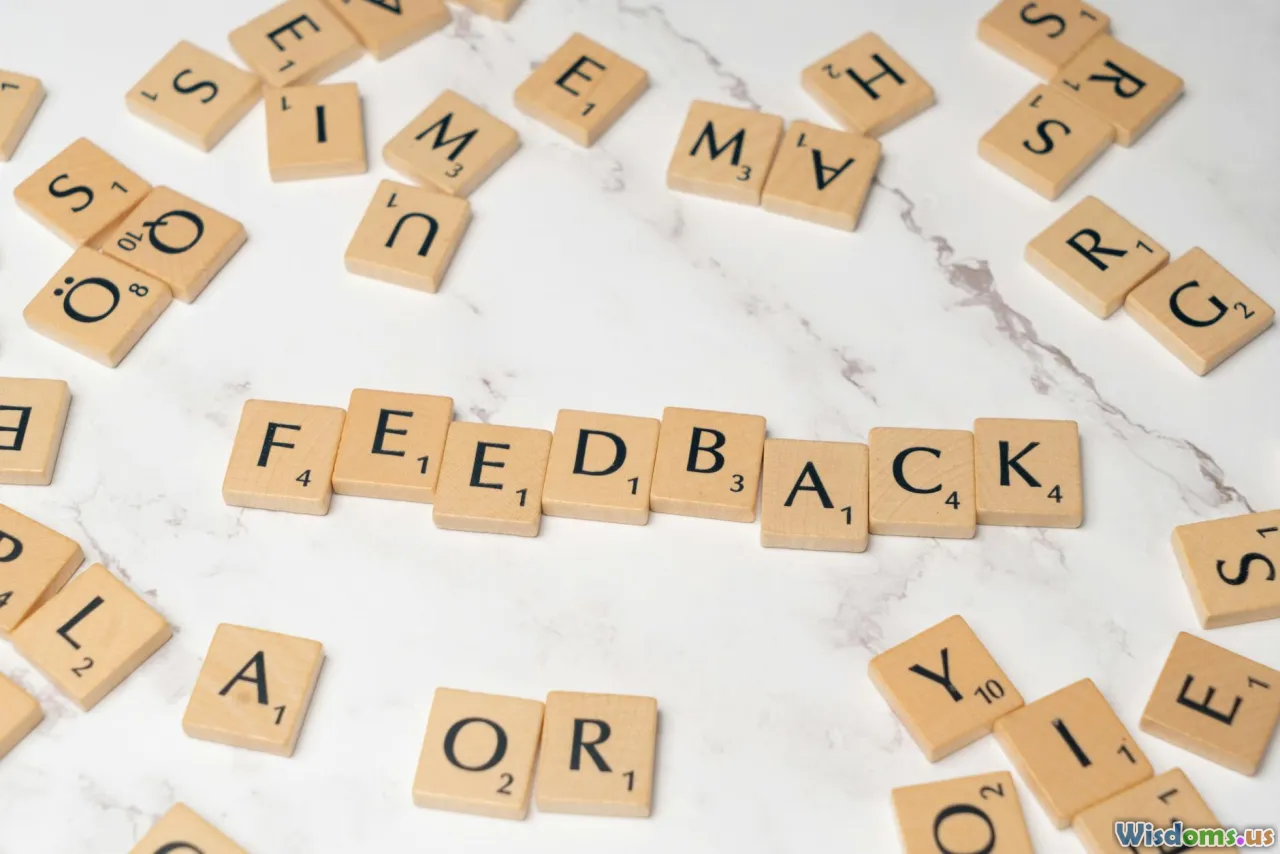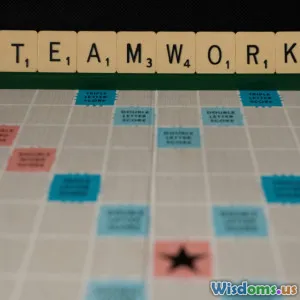
Lessons From Managing Team Conflicts In Remote Settings
16 min read Explore proven strategies for navigating and resolving team conflicts in remote work environments. (0 Reviews)
Lessons From Managing Team Conflicts In Remote Settings
Remote work has transformed team dynamics across industries. While virtual collaboration removes geographical barriers and opens up a world of talent, it also makes miscommunication and conflict more likely—and, sometimes, more complex to unravel. As countless leaders have discovered, successfully managing team conflicts in a remote setting requires unique approaches, new habits, and a careful blend of empathy and structure. This article shares real-world lessons and actionable strategies for turning challenging moments into opportunities for growth and deeper collaboration.
Understanding the Roots of Remote Team Conflicts

The triggers for conflict in remote teams often differ from traditional office settings. In-person, nuanced body language, hallway chats, and spontaneous clarifications smooth out rough edges. When your team is spread across time zones, working through emails or Slack messages, friction can escalate quickly.
Common causes of conflict in remote teams include:
- Miscommunication. Without visual cues, written messages can be easily misinterpreted. For example, what’s meant as a brief directive might be read as curt or dismissive.
- Cultural differences. Remote teams frequently span regions or countries, bringing diverse communication and work styles. Asynchronous workflows sometimes mask subtle, but important, cultural signals.
- Lack of visibility. When team members don’t see each other at work, they may feel left out, undervalued, or suspicious of resource and responsibility allocation.
- Uneven work distribution. In remote settings, workload imbalances can become more pronounced and harder to detect.
Example: During the 2020 pivot to remote work, a cross-border software development team noticed tension after a high-priority bug fix. Developers in South America felt they carried extra burdens, while team members in Europe were praised for delivery. The misalignment stemmed from misplaced credit during asynchronous updates, causing frustration and slightly damaging team trust.
Communicate With High Intent—And Increased Clarity

A key lesson repeatedly highlighted by successful remote leaders: Never leave clarity to chance. Over-communication is rarely a problem in the virtual workplace—under-communicating absolutely is.
Best Practices for Intentional Communication
-
Double Down on Transparency. Share not just decisions, but the thought process behind them. Annotated meeting notes, video summaries, and explainer Loom videos can help.
-
Check Assumptions. Regularly ask team members to summarize key takeaways or next steps. This prevents subtle misunderstanding from growing into disputes.
-
Use the Right Medium. Sensitive or nuanced conversations should usually happen synchronously (video or phone), not asynchronously (email or chat). Whenever possible, turn on cameras—face-to-face builds trust.
Example: A remote design team reduced miscommunications by ending every project meeting with a quick, round-robin recap. Team members restated what they heard, every actionable was clarified, and misunderstandings dropped significantly.
Building a Foundation of Psychological Safety

Remote conflicts are made worse without mutual trust and emotional safety. Psychological safety—the belief that anyone can speak up without risking punishment or humiliation—is proven to improve team performance and resolve conflicts swiftly. Google’s Project Aristotle study highlighted this principle, and it matters even more in distributed teams.
How to Foster Psychological Safety in Remote Teams:
- Model Vulnerability. Leaders who acknowledge their own mistakes and uncertainties normalize openness for all.
- Cultivate a "don’t shoot the messenger" culture. Praise the surfacing of problems, not just solutions.
- Safe Spaces for Feedback. Schedule regular, low-stakes 1:1s focused on candor, not judgment.
Insights from Experience: A global fintech team introduced monthly “retros” where any team member could anonymously flag process or interpersonal issues. Team engagement improved, and small grievances were resolved before escalating.
Lean Into Proactive Conflict Prevention

Many leaders make the mistake of being purely reactive to conflicts, only stepping in when problems become visible. Effective remote managers, however, take steps to identify and address sources of friction before issues boil over.
Tactical Steps for Preventing Conflict
- Set Crystal-Clear Expectations. Document not just "what" people are doing, but "how" they’re expected to collaborate.
- Rotate Meeting Times or Asynchronous Sprints. Respect varying schedules with flexible, fair structures to ensure no one feels persistently disadvantaged.
- Regular Climate Checks. Deploy short, anonymous surveys to spot brewing stress or frustration.
Real-World Data: A 2023 Pulse Survey by Slack’s Future Forum found that teams with regularly scheduled climate checks reported 29% fewer conflicts than those that only met reactively.
Leverage Structured Problem-Solving Techniques

Resolution looks different—and often more effective—when guided by frameworks. Techniques such as root-cause analysis, facilitated discussions, and action-oriented follow ups ensure problems result in collective learning rather than scapegoating.
Step-by-Step: A Problem-Solving Framework
- Identify the Issue. Give everyone a chance to articulate their perspective.
- Separate Facts From Feelings. Ask for specific examples; don’t rely on general claims.
- Collaborate on Solutions. Encourage ideation on how to move forward, not just who’s to blame.
- Assign Ownership and Timelines. Write down next steps and assign champions.
- Circle Back. Schedule a follow-up to confirm progress and tweak as needed.
Example in Practice: After a missed milestone, a distributed marketing team held a "blameless post-mortem" via video call. By focusing on process gaps—rather than individuals—they discovered lapses in information flow during handovers and introduced checklists. Subsequent projects ran more smoothly, with reduced recurring disputes.
Equip Leaders and Teams With Conflict Resolution Training

Empowering managers and individual contributors with conflict resolution skills pays major dividends. Remote-specific workshops are growing in popularity, targeting virtual role play, unconscious bias, and scenario-based negotiation.
Best Practices for Remote Conflict Resolution Training:
- Scenario Simulations. Use breakout rooms to enact hypothetical conflicts, followed by feedback rounds.
- Active Listening Drills. Practice reflecting, restating, and summarizing teammate concerns to ensure understanding.
- Cultural Competency Modules. Address regional differences in language, tone, and interpretation.
Industry Example: A multinational tech company embedded quarterly micro-trainings for all supervisors. Over two years, HR-reported interpersonal conflicts dropped by 18%, while retention rates rose in newly remote teams.
Normalize Feedback—And Make It Actionable

Giving and receiving feedback is a muscle that needs to be flexed regularly—especially in remote settings where "watercooler" corrections simply don’t happen. Regular, structured feedback builds resilience against resentment and silent disagreements.
Tips to Encourage Healthy Feedback Routines:
- Schedule Feedback Cycles. Try bi-monthly “feedback Fridays,” alternating between written peer reviews and short video calls.
- Implement 360-Degree Feedback Tools. Use tools like Small Improvements or Culture Amp that support continuous, multi-source commentary.
- Offer Resources for Difficult Conversations. Share UCLA’s Feedback Formula or the SBI Model (Situation-Behavior-Impact) as frameworks.
Practical Insight: A remote research team found that “kudos channels” in Slack allowed for immediate, public acknowledgment of strengths—which in turn made constructive critique feel less daunting to give and receive.
Make Time Zones and Work-Life Boundaries Allies, Not Enemies

Webs of time zones—often thought of as remote teams’ biggest curse—can, if managed correctly, become a secret weapon for healthy collaboration and reduced conflict. Recognizing the natural rhythms and needs of a distributed group requires intentional design.
Tactics for Minimizing Time-Related Conflict
- Establish Shared Core Hours. Ensure there’s at least a small window everyone overlaps for critical collaboration.
- Respect Local Boundaries. Use tools like World Time Buddy or Clockwise to schedule meetings and respect non-working hours.
- Asynchronous Updates. Lean on written or recorded check-ins to keep work moving, regardless of location.
Example: An open-source nonprofit structured its workflow around a flexible, “follow-the-sun” model, with each region providing handovers rather than waiting for simultaneous meetings. The result was increased autonomy and fewer deadline disputes.
Strengthen Digital Meeting Design

With screen fatigue rising, productive remote meetings require careful facilitation and design. Poorly run calls breed disengagement or frustration, sowing the roots of avoidable disputes.
Recommendations for Smoother Virtual Gatherings:
- Prep Agendas—And Stick To Them. Share detailed topics and clear expected outcomes beforehand.
- Rotate Facilitators. Give different team members responsibility for setting the tone.
- Include Check-Ins and Icebreakers. Use simple warm-up questions to break down virtual barriers.
- Use Breakout Rooms for Tension-Prone Topics. Small groups foster greater honesty and faster resolution.
Insightful Example: A digital agency found that by starting with a brief “temperature check” poll, they caught mood shifts early and reduced misunderstandings during intense project sprints.
Harness the Power of Documentation and Transparency

Documentation is not just a record—it's the oil that keeps distributed teams humming. Detailed, accessible documentation helps prevent knowledge gaps that morph into conflicts over accountability, process, or priorities.
Strategies for Impactful Documentation
- Create a Living Team Wiki. Store decision logs, process guides, and conflict-resolution playbooks.
- Document Roles and Responsibilities. Ensure everyone knows what’s expected—and how outputs connect.
- Make Updates a Habit. Set up quarterly “Wiki Weeks” for housekeeping, inviting everyone to contribute.
Real-World Example: A global SaaS company drastically reduced recurring task disputes by introducing a robust Confluence wiki with team charters, definition of done, and escalation paths for disagreements.
Embrace Humility—And Don’t Skip the Post-Mortem

Even with the best systems, conflict will happen. The most consistent lesson shared by experienced remote managers: growth depends on learning from each incident, not just moving past it.
Best Practices for Reflective Growth:
- Host Post-Mortems After Conflicts, Not Just Projects. Ask, “What can we do better next time?”
- Acknowledge Imperfection. Frame unresolved conflicts as opportunities for design improvements, not failures.
- Celebrate Resilience. Give credit not only for resolution, but for honest participation in tough conversations.
Example Insight: After a series of challenging quarters, an edtech remote team rewarded not just top performance, but “most improved relationships” and “best comeback from a conflict”—sending a message that growth isn’t just about revenues, but teamwork.
Remote teams are here to stay, and the skills for navigating conflict at a distance are rising in importance. By investing in intentional communication, psychological safety, equitable structures, and frequent learning cycles, organizations not only resolve differences—they build more resilient, creative, and satisfied teams. Embracing these lessons ensures conflicts become stepping stones, not stumbling blocks, on the road to collective success.
Rate the Post
User Reviews
Popular Posts




















